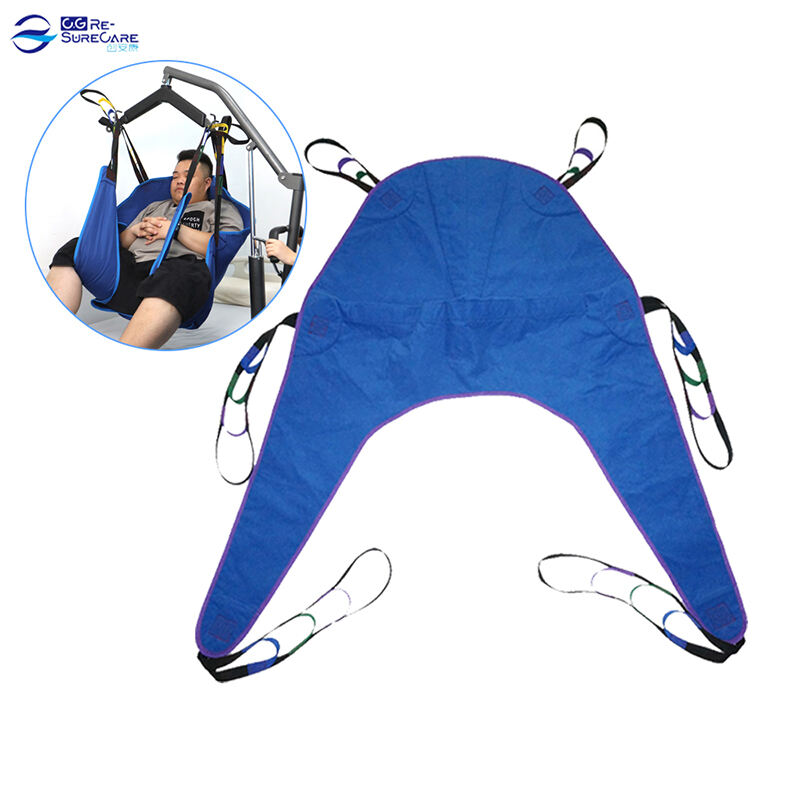The Importance of Patient Gait Belts in Rehabilitation
Understanding Patient Gait Belts in Rehabilitation
Definition and Core Functions
Patient gait belts are specialized safety devices used to assist individuals facing mobility challenges. These belts are typically crafted from durable materials such as canvas or nylon, designed to withstand frequent use in rehabilitation settings, ensuring both safety and comfort. Their core functions encompass providing support during transfers, assisting with walking, and enhancing stability, offering caregivers a secure handle to aid patients during movements.
Role in Transfer and Mobility Assistance
Gait belts play a crucial role in transferring patients safely from one position to another, such as moving them from a bed to a wheelchair. They provide caregivers with a secure grip, significantly minimizing the risk of falls and injuries during transfers. The proper use of gait belts can substantially improve the efficiency of patient handling protocols, reinforcing safe and seamless mobility transitions.
Connection to Fall Risk Prevention
Statistical evidence demonstrates that the implementation of gait belts in care routines meaningfully reduces fall risks. By enhancing patient stability and allowing for quick adjustments during movement, gait belts act as a preventative measure against falls. Healthcare professionals emphasize the importance of training on gait belt application to maximize their fall prevention potential, promoting safer environments.
For more detailed product descriptions, please refer to individual patient lift slings, ice pack wrap, toileting sling, transfer sling, or patient transfer gait belt products available in the healthcare market.
Key Benefits of Gait Belts in Therapy
Enhancing Safety During Ambulation
Gait belts significantly enhance safety by providing caregivers with a secure hold, essential during patient ambulation. This firm grip is pivotal in preventing accidents during walking or transfers, thereby reducing ambulation-related incidents in healthcare settings. A study highlighted that the consistent use of gait belts is associated with increased patient confidence, as they feel safer and more supported during movement. This, in turn, encourages patients to participate more actively in rehabilitation exercises, fostering faster recovery.
Reducing Caregiver Injury Risks
Caregiver injuries, often resulting from lifting and transferring patients, contribute to high turnover rates and shortages in personnel. Gait belts help mitigate these risks by distributing the patient's weight evenly, minimizing physical strain on the caregiver. Evidence indicates that facilities utilizing gait belts report fewer workplace injuries related to patient handling, leading to a healthier workforce. This effective weight-sharing mechanism reduces the risk of caregiver burnout, ensuring they can perform their duties without unnecessary injury.
Supporting Progressive Mobility Goals
Gait belts are instrumental in supporting progressive mobility goals by enabling controlled movement during rehabilitation. Therapists leverage gait belts to encourage patients in walking practices, directly contributing to quicker recovery and greater independence. Moreover, expert opinions underscore the value of gait belts in crafting personalized rehabilitation plans tailored to various mobility levels. This adaptability ensures that each patient's unique rehabilitation needs are met efficiently, accelerating their progress towards autonomous movement.
Critical Features for Effective Rehabilitation Use
Material Durability and Skin Protection
The durability and skin protection offered by gait belts are paramount in any rehabilitation setting. High-quality materials, capable of withstanding repeated use, are essential. Many gait belts incorporate padding to minimize skin irritation and prevent pressure sores, enhancing overall patient comfort. Studies underscore that when belts prioritize skin protection, they are more likely to be consistently used by patients, making rehabilitation efforts more effective.
Adjustability for Diverse Patient Needs
Adjustability is a critical feature that allows gait belts to cater to a wide range of patients, accommodating various sizes and shapes. This flexibility enhances safety during application and is especially beneficial for differing mobility requirements. Rehabilitation professionals confirm that adjustable gait belts improve safety outcomes, ensuring a secure fit that supports the unique needs of each patient during transfers and ambulation.
Integration with Transfer Slings and Supports
The synergy between gait belts and supportive devices like transfer slings enhances their effectiveness significantly. This integration facilitates smoother and safer transitions for patients during transfers, thereby reducing the associated risks. Numerous studies advocate for the combined use of gait belts and other support systems, emphasizing their role in optimizing patient safety and enhancing overall caregiving practices.
Specialized Products for Rehabilitation Success
Boot Heel Protectors Cushion-CGSL403: Pressure Relief Solution
The Boot Heel Protectors Cushion-CGSL403 is meticulously designed to alleviate pressure on patients' heels, thereby minimizing the risk of developing sores. This is especially crucial for immobile patients who are at higher risk of pressure sores that can compromise their overall health. The mechanism embedded within these protectors ensures consistent pressure relief, playing a pivotal role in maintaining skin integrity over extended periods. Clinical evaluations have demonstrated their effectiveness, highlighting their importance in long-term care scenarios where patient immobility is prevalent.

Padded Divided Leg Sling-CGSL219: Secure Transfer Assistance
The Padded Divided Leg Sling-CGSL219 is engineered to provide secure and comfortable transfer assistance for patients with limited mobility. Its padded design ensures that patients experience comfort during transfers, while the divided leg feature enhances stability, making it indispensable for safe and efficient patient handling. Nursing evaluations affirm that using the right sling, like this, conveys significant improvements in transfer safety and efficiency. It is designed for ease of use, allowing caregivers to perform transfers with minimal strain and maximum security.

Incorporating these specialized products into rehabilitation protocols can significantly enhance patient care, providing both necessary support and comfort.

 EN
EN




























